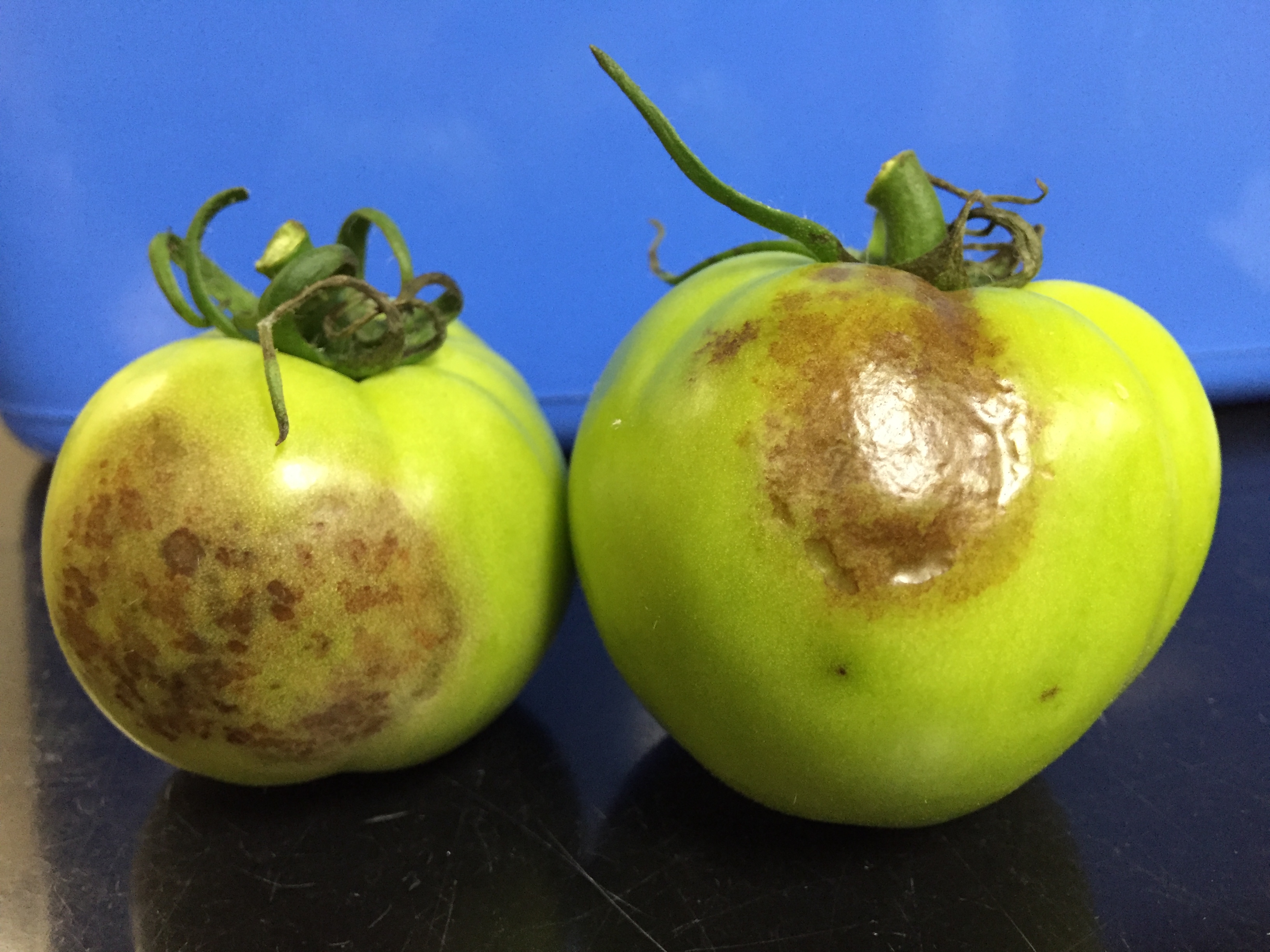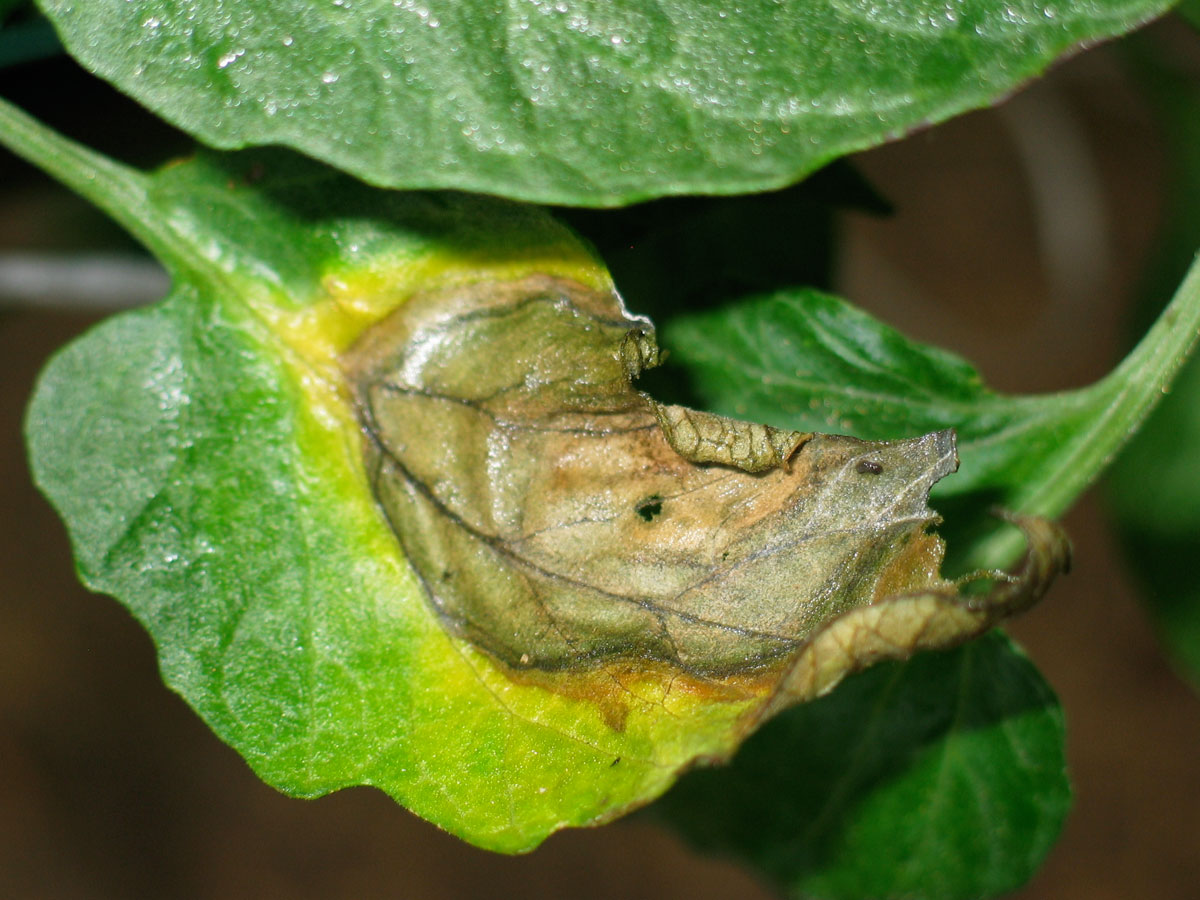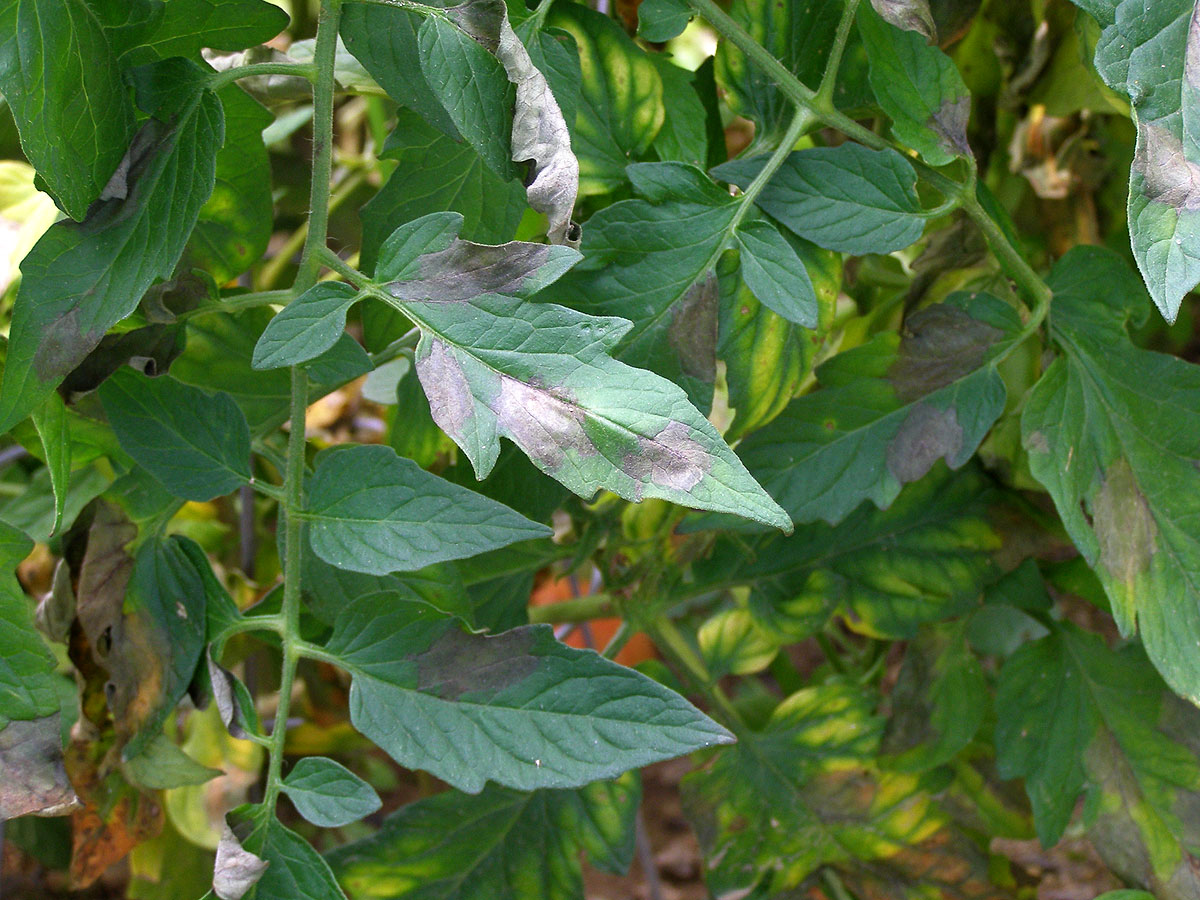

These plants should be dug up, placed in a plastic bag and discarded in the trash or completely buried deep enough so plants decompose and will not resprout. The most likely source of late blight is infected potato tubers that survived the winter, tubers that were saved, or tubers that remained in the soil unfrozen and grow from overwintered tubers as volunteer potato plants. The late blight organism requires living tissue to survive it does not survive in the soil or carried tomato seed.


Hot, dry periods are not conducive to late blight development. Spores land on leaf tissue and penetrate the leaf, causing rapid decline and death of the plant under favorable conditions, Phytophthora infestans is favored by cool (below 77 F), wet weather. In cloudy, gray weather, the clouds protect spores being dispersed in wind from the killing effect of ultraviolet radiation. Sporangia are spread long distances by wind and wind-driven rain. Wherever infected tubers or plants are found, if conditions are favorable, the plants will develop late blight lesions that release sporangia. Fortunately, there is currently no evidence that this happens in New England. In more southern and tropical regions, the pathogen produces long-lived sexual spores (Oospores) that survive in infected crop debris and the soil. The pathogen does not overwinter in tomato plants or debris, and is not seed-borne. infestans in the Northeast survives in infected potato tubers that were saved from last year for seed or that were disposed of in compost piles or cull piles, or left in the garden in soil that did not freeze during the winter. If the lesion has a yellow border and is occurring on the bottom of the plant, it is likely due to infection of either early blight or Septoria leaf spot.

Late blight can sometimes be confused with early blight and Septoria leaf spot, two common diseases found in home gardens. Firm, brown spots develop on tomato fruit. Brown to blackish lesions also develop on upper stems. Leaf lesions begin as tiny, irregularly shaped brown spots. Sometimes the lesion border is yellow or has a water-soaked appearance. Symptoms on plants in the garden appear as large (at least nickel-sized) olive-green to brown spots on leaves with slightly fuzzy white fungal growth on the underside when conditions have been humid or wet. The most common early symptoms on tomato transplants are brown lesions on stems, with white fungal growth developing under moist conditions. Keeping the disease in check requires attention and vigilance from gardeners and farmers alike. Since then, it has continued to appear throughout New England in farm fields and home gardens, but fortunately it has not caused losses at the same level. In 2009 a widespread outbreak affected both home gardens and commercial farms on a broad scale, causing significant yield losses in both tomato and potato. It has been in the US for over a century, but it has become more of a concern in the Northeast in recent years. Late blight is the same disease that caused the Irish Potato Famine in the 1840s. All tomato and potato plants grown in home gardens and in commercial fields are susceptible to late blight! Given the right conditions, the spores are easily carried for miles in wind currents to infect susceptible plants in even the most remote parts in our region.
#LATE BLIGHT IN TOMATOES HOW TO#
Because the disease can move very easily from one garden or field to others, it is critical that both home gardeners and farmers know how the disease works, what to look for, and how to manage it. Home gardeners should be aware of Late Blight caused by Phytophthora infestans – a very destructive and very infectious disease that kills tomato and potato plants in gardens and on commercial farms across the U.S.


 0 kommentar(er)
0 kommentar(er)
